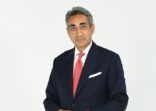Equity funds continued to register net outflows in Hong Kong and Singapore in the first quarter of 2017, according to The Cerulli Edge report for Asia-Pacific.
The trend carries over from 2016 when nvestors in both markets rushed towards fixed-income products to ensure steady income flows, as they were concerned about global market volatility, the firm noted.
In addition to pure bond funds, however, balanced funds seem to be gaining interest this year, the report noted.
Net new flows by investment objective (1Q 2017, $bn)
|
|
Hong Kong |
Singapore |
|
Balanced |
2.1 |
0.9 |
|
Bond |
1.8 |
1.8 |
|
Money market |
0.1 |
0.02 |
|
Others |
-0.01 |
-0.02 |
|
Equity |
-1.7 |
-0.7 |
Source: Cerulli Associates
The 2016 sentiment was the same in Asia ex-Japan as a whole. Bond funds had net new inflows of $143.8bn, while net new flows into equity funds were close to zero, the report’s findings show.
In Singapore in particular, the demand centred on US and Singapore dollar-denominated bond funds, as well as global and Asian fixed income funds.
To capitalise on this demand, Hong Kong issuers, such as BEA Union Investment, HSBC Global Asset Management, Schroder Investment Management and Fidelity, launched several new Asian and Chinese bond funds during the year.
Fixed-maturity plans were also popular last year in both markets. FMPs are typically structured for private banking clients. They have a tenure of around four years and invest in US floating-rate bonds.
Risk-aversion continues
According to the report, the risk-off environment persisted into the second quarter of 2017. Investors continue to seek bond funds, despite efforts from distributors and fund managers to push equity fund products.
More than 90% of fund managers surveyed by Cerulli said they would continue to promote both fixed income and equity strategies to distributors in Hong Kong and Singapore.
In addition, 80% of them also indicated they would promote mixed-asset funds in both jurisdictions.
So far this year, Asian currency bond funds and mixed-assets income funds raised the most money in new fund launches in the region, according to the report. For example, the HSBC Global Asset Management’s Asia High Income Bond Fund, which debuted in Hong Kong in February, raised nearly $1.3bn in two months.
The report also noted that multi-asset and bond funds dominate focus fund lists from key distributors in Hong Kong and Singapore.
Meeting investors’ demand
The Cerulli Associates report recommends that fund managers work on volatility-based products. Fund selectors in Hong Kong and Singapore surveyed by the firm highlighted that low volatility was among the top features investors find attractive.
Long-term theme-based ideas, such as robotics and healthcare, could also convince distributors to promote managers’ products while meeting investors’ needs.
Examples of these theme-based ideas are the real estate investment trust exchange-traded funds launched by Phillip Capital Management and Nikko Asset Management, or Lion Global’s passively-managed Disruptive Innovation Fund.
Distributors are also interested in promoting liquid alternatives as they see increasing uncertainty and volatility in the market. They believe a small allocation to such funds in clients’ portfolios will improve diversification and overall returns for investors. However, not much interest has yet been seen from retail investors in both Hong Kong and Singapore.
















